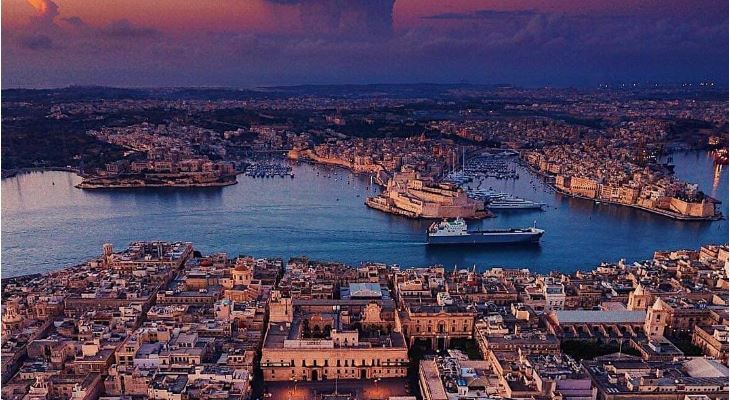Malta is full of man-made wonders, including a great heritage from people of the past. Find out which are the most awesome.

The Megalithic temples, St John's Co Cathedral, the Hypogeum, the Catacombs, Valletta city, Mosta Dome … hang on, there’s waaaay more than seven! There really is a lot to be in awe about on this little island. ‘Awesome’ is a word that can describe many of the man-made structures in Malta throughout its 7,000 years of human occupation, each era leaving its indelible mark on the island’s face through some kind of unique heritage. So I decided to group them up instead.
1. Malta’s megalithic temples
Welcome to the most ancient freestanding man-made structures on Earth. At around 5,600 years old, the Malta Temples are older than Stonehenge and the Pyramids. Although there are many more, UNESCO lists six different prehistoric temple complexes in Malta and Gozo as World Heritage sites: Hagar Qim and Mnajdra, the Tarxien Temples; Ta’ Hagrat and Skorba; and the Ggantija Temples.
2 The Hal Saflieni Hypogeum
Moreover, a rather unique prehistoric monument and one of the oldest in the world, the Hal Saflieni Hypogeum is also a UNESCO World Heritage site. Several recovered artefacts suggest it was a sanctuary while numerous human remains indicate it was later used as a necropolis. The complex, underground rock-cut structure, however, possesses formidable acoustics while legends include the finding of elongated skulls, so who knows what ineffable mysteries this place still holds? Booking weeks ahead is essential.
3. The forts & fortifications of Malta
Valletta, The Three Cities, Mdina and the Citadel continue to stand majestically and never outwitted with their city bastions. In the 16th and 17th centuries, the Knights of Malta improved the island's medieval defences and built several forts, batteries, redoubts, entrenchments and watchtowers along the coast. Some of the forts now house museums or even host events; check out the area of the Grand Harbour.
4. The Grand Harbour
Though the harbour itself is natural, the defences in the form of fortified cities and forts on its shores are not, and these are remarkable. Although the Knights Hospitallers of St John built watch towers and defences around the whole island, the Grand Harbour - in the midst of which stands Fort St Angelo, the Knights' headquarters - was the most heavily guarded. The Knights built the city bastions and fortifications of the Three Cities, namely Birgu, Bormla and Isla, as well as Floriana and the entire city of Valletta, while nine forts protected Malta’s two most important harbours.
5. Malta's palaces
While they lived in Malta between 1530 and 1798, the Knights of Malta built several Auberges as residences for the Knights, as well as a number of palaces. Many of these can be visited; for example, the Auberge de Provence houses the National Museum of Archaeology, and the Auberge d’Italie houses MUZA, Malta's National Museum of Art; meanwhile, the exterior of the Auberge de Castille, now the office of the Prime Minister of Malta, must be seen. Palaces not to be missed would include the Grandmasters' Palace and the Inquisitor's Palace, as well as private Knight's residences, such as Casa Rocca Piccola or those owned by a marquis or other noble family, such as Palazzo Parisio.
6. Malta's churches
Grander still than the palaces are the churches. Some of the most notable ones include: The Knights St John's Co Cathedral in Valletta and St Paul's Cathedral in Mdina; the battle of the 3rd largest unsupported dome between Mosta Dome and Xewkija Dome; and Ta’ Pinu, the church of miracles. Some of these include lavish decoration and other wonderful lore.
7. The Addolorata cemetery
Initially, this may sound like a strange contender. But when you consider that several generations of the population of an entire nation has ended up lying there, it is quite extraordinary. Set aside the tiny old cemeteries in old villages, the Addolorata cemetery caters to the vast majority of Malta's corpses. It takes up a large expanse of land in the south of Malta, the size of a small village but with tombs for houses. Now that is quite remarkable.